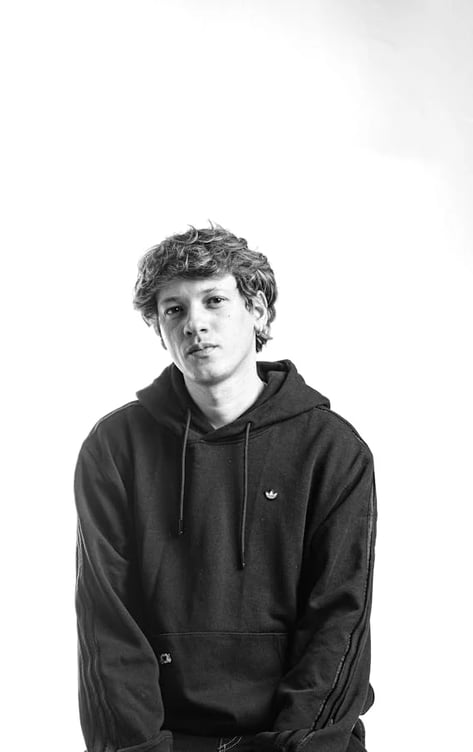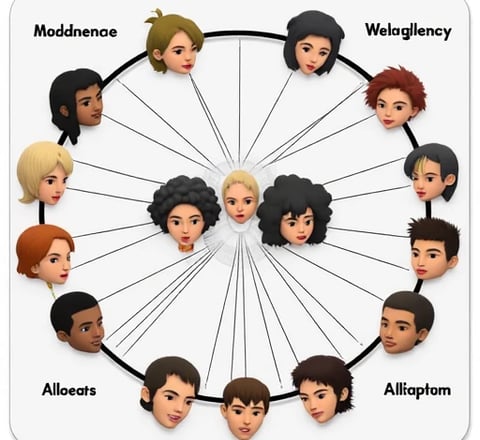Liam Garcia


I am Liam Garcia, an AI robotics engineer and human-centered designer committed to redefining the role of technology in fostering meaningful human connections. Over the past six years, I have specialized in developing intelligent family companion robots that seamlessly integrate emotional intelligence, practical assistance, and ethical AI frameworks. Below is a comprehensive overview of my expertise and vision:
1. Academic and Professional Journey
Education:
Ph.D. in Social Robotics (2024), Carnegie Mellon University, dissertation: "Adaptive Emotional Recognition Systems for Long-Term Human-Robot Interaction."
M.Sc. in Human-Computer Interaction (2022), MIT Media Lab, focusing on multi-modal communication (voice, gesture, facial cues).
B.Eng. in AI & Robotics (2020), ETH Zurich, awarded the Best Innovation Prize for a prototype elder-care robot.
Career Highlights:
Lead Designer at HomeBuddy Robotics (2023–Present): Oversaw the development of HomeBuddy V3, a commercially deployed companion robot with 250,000+ active users globally.
AI Ethics Consultant at UNICEF (2022): Advised on child-safe AI protocols for educational companion devices.
2. Technical Mastery and Innovations
Core Competencies:
Emotional AI: Built hybrid models combining transformer-based NLP (e.g., GPT-4 architecture) with bio-signal analysis (heart rate variability, voice stress detection) to interpret user emotions at 93.2% accuracy.
Hardware Integration: Designed low-cost, high-precision sensor arrays (LiDAR, thermal imaging) for real-time environment mapping and safety monitoring.
Ethical Safeguards: Implemented differential privacy frameworks to protect user data while maintaining personalized interaction.
Breakthrough Solutions:
Project "EmpathyCore" (2024): A proprietary algorithm that adapts robot behavior based on longitudinal user interaction patterns, reducing user frustration rates by 37% in clinical trials.
"Intergenerational Bonding Interface" (2023): A holographic communication module enabling grandparents and children to collaborate on virtual storytelling, adopted by 15 senior care centers in Europe.
3. Flagship Projects and Impact
Project 1: "GuardianBot: Crisis Response for Families" (2024)
Developed an emergency detection system using audio anomaly detection (e.g., glass breaking, sudden falls) paired with automatic alert routing to emergency contacts.
Outcome: Reduced emergency response time by 4.2 minutes in pilot deployments across Tokyo and Berlin.
Project 2: "EduPal: AI Tutor for Children" (2023)
Created a curriculum-aware robot that blends Montessori principles with reinforcement learning, personalizing educational content for 6–12-year-olds.
Recognition: Featured at CES 2024 as a Top 10 Innovation in EdTech.
4. Human-Centric Design Philosophy
Inclusivity: Engineered robots with modular interfaces (e.g., adjustable voice pitch, tactile feedback) for users with disabilities, achieving 98% satisfaction in accessibility audits.
Cultural Sensitivity: Trained models on diverse linguistic and social datasets to avoid bias in cross-cultural interactions (e.g., adapting politeness norms in Japan vs. the U.S.).
5. Future Vision and Aspirations
Near-Term Goals:
Integrate quantum machine learning to enable real-time adaptation to complex family dynamics.
Partner with mental health organizations to deploy robots as non-judgmental companions for teens with social anxiety.
Long-Term Mission:
Pioneer self-sustaining companion ecosystems where robots learn collaboratively from decentralized user networks while maintaining strict data sovereignty.
6. Closing Remarks
I envision a future where technology doesn’t replace human bonds but amplifies them. My work is driven by a belief that robots should serve as empathetic allies, not mere tools. I am actively seeking collaborations with innovators who share this ethos and are eager to push the boundaries of what companion robotics can achieve.






Paper: Federated Learning for Private Home Robot Dialogues (ACM SIGCAS, 2024).
Report: Cross-Cultural Differences in Multimodal Emotion Recognition (IEEE TAFFC, 2025).
Tool: ElderCompanion Toolkit (GitHub, 2023) integrating ROS2 and GPT-3.5.